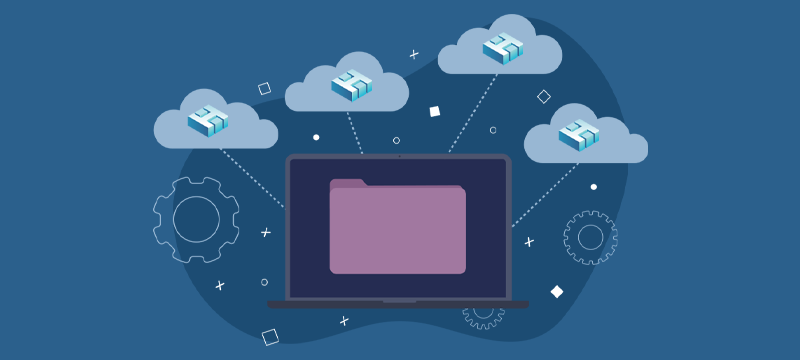Multi-cloud deployments have become increasingly common in recent years as more enterprises seek to avoid vendor lock-in and gain greater flexibility and resilience in their IT operations. According to recent studies, more than 80% of organisations now have a multi-cloud strategy in place, with most using at least two public clouds and one private cloud. Aside from its benefits, however, adopting a multi-cloud approach can raise a number of issues that need to be addressed, here we look at six of the most common.
- Issues with terminology
One of the issues of multi-cloud is that different providers can use differing terminologies. While cloud services and their features are generally similar across different vendors, each can use different terms for its tools, storage, hardware, management and other aspects. This can make it confusing for employees who have to manage and work with multiple cloud environments and can potentially cause issues or impact productivity. To overcome this, staff should familiarise themselves with the terminologies of each vendor and, where possible, take any online certification courses. - Understanding the hardware
Public cloud service providers deploy a diverse range of hardware, and it’s essential that enterprises understand if the hardware available meets their specific needs. This requires companies to find out if the hardware underpinning their cloud will deliver the performance and reliability they need, for example, does it incorporate Intel Xeon processors and superfast SSD drives and does it offer 100% uptime guaranteed by SLA?
Once the right hardware has been found, enterprises then need to work out whether it is cost-effective to use. Using a Total Cost of Ownership calculator (TCO), companies can work out how their costs would fluctuate based on the CPU and storage configuration. - Operating system dilemmas
When it comes to choosing an operating system (OS) for the cloud, enterprises should conduct thorough research on the available platforms to determine which one best suits their needs. While Linux versions tend to be prevalent, some companies may prefer a Windows environment. In most cases, it is best to use an OS that the IT team is familiar with to prevent the possibility of there being issues that they lack the know-how to deal with. In order to work more effectively and with fewer issues, many IT teams prefer to work with the same OS across all their vendors – where possible. This can sometimes mean migrating an application to a new OS, a process that goes more smoothly with the support of an experienced and trusted solutions provider. - Choosing a secure provider
Enterprises considering multi-cloud adoption face significant security challenges. For this reason, it is vital to choose cloud providers that offer more than a basic level of security. Each vendor should provide security expertise and have the tools to keep systems and data protected – including next-gen firewalls; intrusion, malware and DDoS prevention; encryption and backup solutions.
Of course, enterprises with multi-cloud infrastructures cannot rely entirely on individual vendors for security. Security needs to cover their entire architecture, including managing logical access. - Backup challenges
Even with robust security in place, no enterprise is fully free from the risk of a data breach. For this reason, the ability to back up and restore data in the event of a breach is crucial. However, managing backups and security across multiple environments can be challenging. Fortunately, there are services that enable monitoring and management of security and backups in a single, unified view. If a security breach does occur, an organisation will need to restore operations with minimal data loss and as quickly as possible by reverting to the most recent backup available. Before adopting a multi-cloud approach, it is therefore vital that enterprises put viable backup and business continuity solutions in place. - Monitoring and optimisation
Once a multi-cloud infrastructure is operational, there will be a considerable amount of data to process and enterprises will need to monitor factors like bandwidth, latency, data transfer costs and errors. To make this easier and more effective, organisations should consider the use of automated monitoring tools that operate across multiple platforms and which alert IT teams when issues occur. This can help reduce costs and prevent problems with the performance of applications.
Conclusion
Enterprises that adopt a multi-cloud approach benefit from working with the most appropriate vendor for their differing needs, whether that’s the infrastructure available, the expertise of the provider or the cost of the service. It is, however, a more complex way of running IT and as such can cause the issues discussed here. Working with a trusted cloud solutions provider, like Hyperslice, can help enterprises address these issues from the outset.
For more information about our managed cloud solutions, visit Hyperslice.com.

